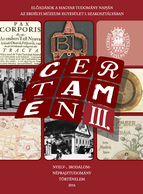
Képmelléklet
List of illustrations to the articles of the following authors: Pozsony Ferenc, T. Szabó Csilla, Tőtős Áron, Ferenczi Szilárd, Wellmann László, Murádin János Kristóf.
More...We kindly inform you that, as long as the subject affiliation of our 300.000+ articles is in progress, you might get unsufficient or no results on your third level or second level search. In this case, please broaden your search criteria.

List of illustrations to the articles of the following authors: Pozsony Ferenc, T. Szabó Csilla, Tőtős Áron, Ferenczi Szilárd, Wellmann László, Murádin János Kristóf.
More...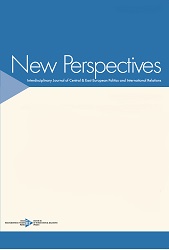
The annual reports published by Institute of World Economy and International Relations (IMEMO) on Russia and the state of world affairs act like the rings on a tree, measuring changes over time by offering a snapshot of a particular instant. This report is no different but comes at a time that could scarcely be more unlike earlier years. The COVID-19 pandemic has acted like a savage beam of light, illuminating processes that were apparent yet not fully revealed. The pandemic has also intensified many of these processes, accentuating what had already been observed to be ‘the great acceleration’, the speeding up of historical processes in recent years. Drawing on the analysis presented in the IMEMO report, this comment identifies three key interrelated issues that are now subject to accelerated change: first, the broader retreat of the post-1945 ‘Yalta’ international system established at the end of the Second World War, focused above all on the United Nations (UN); second, the decay of the post-1989 settlement, which turned out not to be a settlement in any meaningful sense; and third, the return of a certain type of great power relations in the COVID era. The emergence of the rudiments of bipolarity signals the onset of a new era of confrontation, with few of the guardrails of the First Cold War and none of the clear ideological markers of the earlier era, rendering this period more dangerous than that of the post-war conflict and more akin to the period leading up to the First World War.
More...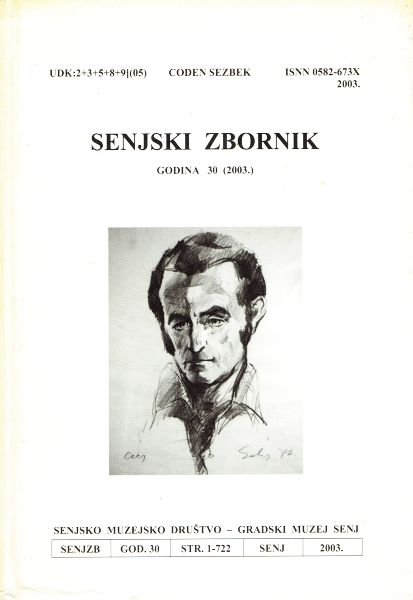
The author in this text presents the destinies of many people from Senj from the 16th century until after WWII. At the beginning of this article, the author describes the life and suffering of Krsto Frankapan, who was a famous warrior in the service of the Roman-German Emperor Maximilian I Habsburg. In a battle against the Venetians he was wounded and imprisoned in the Doge’s Toresseli palace. Also in the prison with him was his wife Apolonia. There are also some other prisoners life stories. The author especially details the personality of Mateša Antun Kovačević from the 18th century who spent his time in prison writing. In the second half of the 19th century Josip Geržanić who fought for Croatian national rights was taken to the prison because he kicked the Croatian Ban Dragutin Khuen-Hèdèrvary who was imposed upon Croatia by the Hungarian government. In the 20th century, from 1918 to 1990, there were a lot of people from Senj imprisoned because of their struggles for national and social rights. Some of them were even killed. The author especially talks about a group of people who were condemned at trials conducted between 1948 and 1949 and about Professor Branko Krmpotić, historian and collaborator with the Senj zbornik who was imprisoned for three years (1946-1949). This article describes difficult times through which Croatian people lived during their history.
More...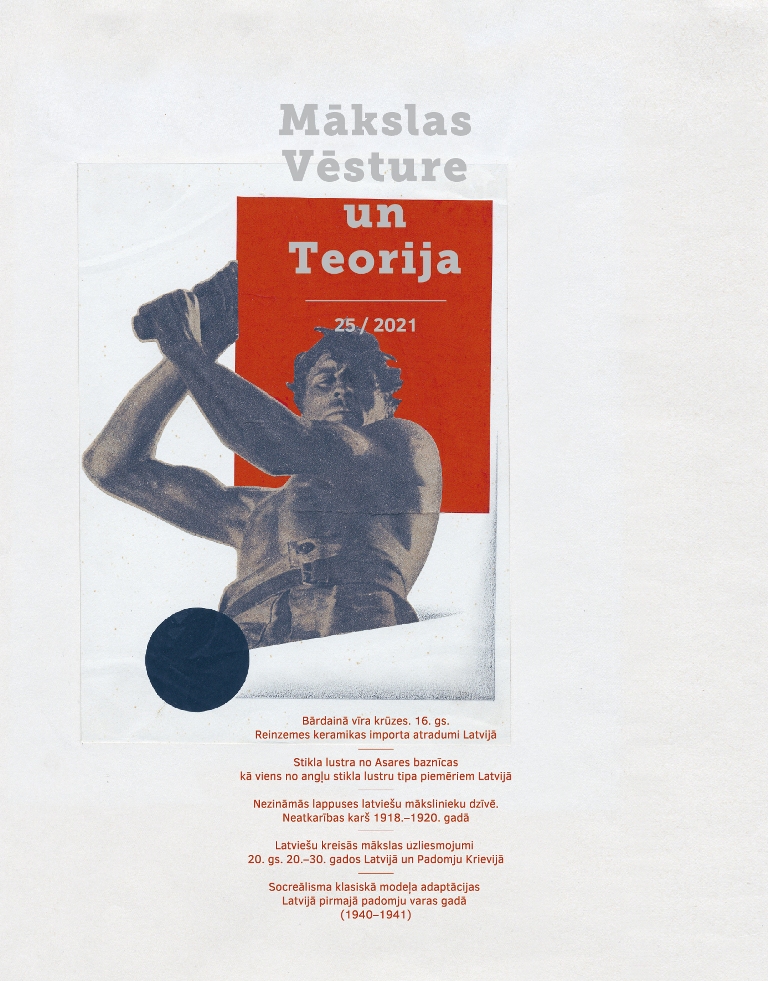
The article focuses on the short Soviet episode between the independence period and the subsequent German occupation, introducing Socialist Realism as a new paradigm for Latvian art theory and criticism. The doctrine had emerged in the USSR during the 1930s and was codified at the First Congress of Soviet Writers (1934) by Stalin’s propagandist Andrei Zhdanov in his famous speech. He proclaimed writers to be “engineers of human souls”. They were urged to represent reality in its “revolutionary development”, educate the working people in the spirit of socialism as well as to use the best achievements of all previous epochs for these purposes.Reflections of the regime’s officials as well as artists, art historians and critics on Socialist Realism appeared in Latvian periodicals by mid-1940. Thus art historian Alberts Prande (1893–1957) reiterated rebukes of formalism from the Soviet press, painter and critic Jēkabs Strazdiņš (1905–1958) extolled the “healthy realist trend” opposed to imitations of Western chaos and liberties; painter Augusts Dīriķis (1894–1941) called for rich ideas and technical skills instead of empty aestheticism, etc. Artists were pushed to depict the new life in “truthful”, content-based works with realist, easily understandable imagery. One of the most theoretical articles was published in the newly founded literature monthly Karogs by the renowned Russian-born art historian Boris Vipper (1888–1967) who came to Latvia in 1924 and returned to Moscow in 1941. He saw Socialist Realism in a quite Hegelian mode. The first phase of cultural evolution was deemed collective idealism, the second – individualism as its antithesis, while the third, present phase of Socialist Realism, described as collective materialism, was said to synthesise both previous extremes and eliminate their worst effects. In terms of form, this collective materialism blended Western traditions of representing spatial depth and chiaroscuro with decorative and rhythmical values, also reintegrating art with practical life and architecture. While this declaration was not really based on the doctrine’s actual sources, it allows us to spot original local modifications. Socialist Realism was popularised in articles praising Russian and Soviet art, for instance, on the Realist trend of the Peredvizhniki (Wanderers). Thus, applied artist and art critic Jūlijs Madernieks (1870–1955) described Ilya Repin as a great model for Latvian artists, modifying his earlier critical remarks about the 19th century Realism. Other Russian artists, such as Vasily Surikov, Aleksandr Deineka or Aleksandr Gerasimov, also featured in periodicals. More general surveys emerged too, mainly extolling the flourishing present in particular kinds of arts. They were authored by the leftist graphic artist Kārlis Bušs (1912–1987), art historian Jānis Dombrovskis (1885–1953), writer, painter and art critic Anšlavs Eglītis (1906–1993) (likely using the pseudonym I. Svarups), also painter and art critic Uga Skulme (1895–1963). Skulme had also sharply changed his opinion about Russian art, now claiming this nation of genius able to blend all foreign influences into a whole while in the inter-war period, he had deemed Russian art slavishly subservient to German Realism. Most of these surveys appeared soon after the occupation, likely aiming to quickly educate the public in the newly conquered territories. Some positive reviews on the USSR cultural scene even predated the occupation for example, in the magazine Atpūta whose editors had been involved with the Society for the Cultural Rapprochement with the USSR, functioning as a de facto recruiting agency for the future puppet government. A different tendency was to speculate on local precursors of Socialist Realism or at least some similar phenomena. Most of these pieces emerged in late 1940 and 1941, suggesting some time was needed in the attempt to inscribe the local heritage into the new paradigm. Self-evident models were members of the so-called Active Artists’ Group related to the inter-war Communist underground, practicing linocuts on social themes in a slightly modernised but rather naïvely realist manner. However, the scope of somewhat acceptable artists was much wider, encompassing the forefathers of Latvian national art, educated in late 19th century Russia and influenced by Realism, such as Ādams Alksnis (1864–1897) or Janis Rozentāls (1866–1916). Expressive draughtsman Teodors Ūders (1868–1915) probably received most attention. He was praised by Skulme, Dombrovskis and others as a simple and convincing interpreter of working people’s lives and thus a true precursor of Socialist Realism. Even artists influenced by modernism were interpreted accordingly; thus art historian Jānis Siliņš (1896–1991) appreciated stage designer and painter Oto Skulme (1889–1967), then the newly appointed rector of the Art Academy, as someone who had luckily abandoned abstract experiments in favour of realism, also being “honest” and “sincere” instead of practicing showy effects. Assessments of the artists’ latest output can be mostly found in reviews of the First Latvian SSR Art Exhibition, which opened in early 1941. For example, Madernieks largely continued his criticism of insufficient optimism, lack of precision in depicting faces, hands and the whole human body, that had been seen already in his articles from the late 1930s. Little was written about Western art during this period, an exception being the French Impressionist Claude Monet. He was described as a “revolutionary” of painting and a sensitive observer of nature in the article by art historian Kristaps Eliass (1886–1963) and painter Ģederts Eliass (1887–1975), who had co-authored a monograph on modern French painting published in 1940. The first Soviet year reveals both continuities and interruptions in regard to the previous period. On the one hand, authors still promoted the traditional neo-realist approach and critique of avant-garde extremes; on the other, they sometimes radically shifted their opinions in favour of Russian art. Most seemingly attempted to somehow “tame” the new doctrine, associating it with established artistic values; these, however, could be exonerated only after Stalin’s death (1953) that started the modernisation and actual disintegration of Socialist Realism.
More...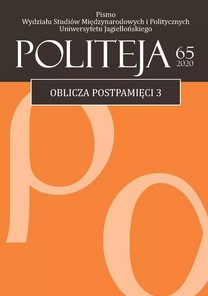
Although originally the term ‘post-memory’ referred to the experiences and memories of the survivors that influenced the biographies of their children, in the following years its meaning was extended and the concept started to be used to describe the processes of transmitting the memory of any traumatic experience within any group, not necessarily bound by blood. In the case of Lublin, where one third of the pre-war community consisted of Jews, most of whom were murdered during World War II, the position of non-Jewish vicarious witnesses seems to be particularly important. This article discusses some aspects of the Holocaust post-memory discourse referring to the cultural activities of the ‘Grodzka Gate – NN Theatre’ Centre. Research questions will concern the artistic language and means of expression of these projects as well as the aesthetic codes that are being used by vicarious witnesses.
More...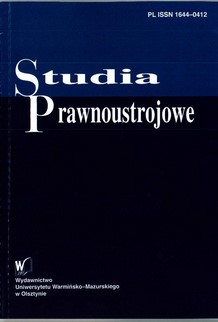
After the end of World War II and the takeover of power in Poland by the communists, repression began against people associated with the state administration of the Second Polish Republic. The authorities issued a number of legal acts allowing the use of repression against political opponents. Government officials of the Second Polish Republic and the wider elite of that country were also considered political opponents. Mere political activity or work in government administration could have caused repression. The communists recognized the interwar Polish authorities as hostile. Participation in exercising and exercising power after 1926 was often a sufficient excuse for repression. The repression used by the communist authorities took the form of both abuses of power and law-based activities. The latter will be discussed in this article. The Polish authorities issued a number of legal acts enabling discriminatory or repressive measures against specific persons or social groups. Some citizens were to be punished for their political and professional activity before the war. The repressions were related to both criminal- law and civil and administrative law. In addition to imprisonment and other penalties, opponents of the state faced nationalization as well as a campaign of administrative difficulty and harassment. These provisions require careful discussion. Their validity and application may currently form the basis for questioning the legality of a number of state actions. It should also be generally determined when service in the interwar administration or political activity ceased to constitute the basis for repression.
More...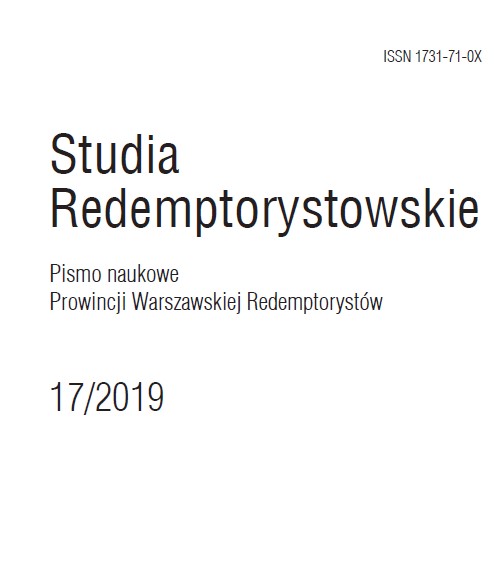
The 20th century was a very difficult period of time for the Greek-Catholic Church in Ukraine. In the year 1946 new communist invaders started to fight religion in Western Ukraine. They have organized so called “council” in Lviv in order to suppress UGCC. Despite that Ukrainian Greek-Catholic Church did not seized to exist. Bishops, priests and faithfuls have survived the time of persecution in the underground. This was the time of great testimony to the faithfulness of our people to the Catholic Church and to the Holy See. That testimony was strengthen by blood of many martyrs: bishops, priest, religious and faithfuls. In the year 1989, when Soviet Union was about to collapse, UGCC has raised from underground to the new life. In 2001 saint pope John Paul II has acknowledged the great sacrifice of Ukrainian martyrs and has beatified 27 of them.
More...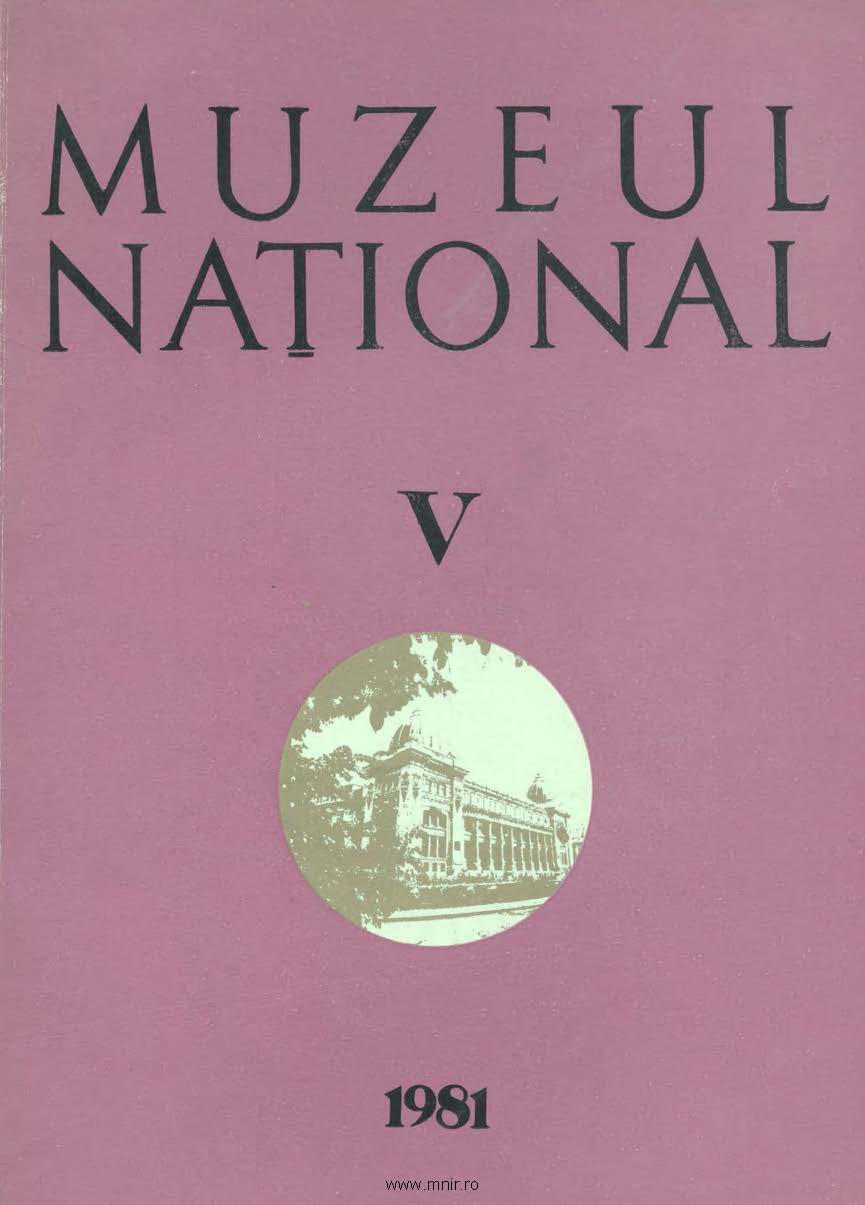
Vorliegendes Studium stellt die politische Lage im Kreis Mureş und in Nord-Siebenburgen dar, gleich nach dem Sieg der nationalen Insurrektion vom 23. August 1944 und die Beteiligung der demokratischen Krăfte, an der Spitze mit der Rumănischen Kommunistischen Partei, neben der rumănischen und sowjetischen Armee, zur Befreiung dieses rumănischen Gebietes, welches durch das wiener Diktat im August 1944 an das Horthy-Ungaren abgetreten wurde. Nach der Befreiung des Kreises Mureş von den horthyst-hitleristischen Trup-pen, wurde zur Wiederherstellung der Parteiorgane und Organisationen vorgegan-gen, die als Hauptaufgabe das Steigen ihres Einflusses in den Reihen der Volk-smassen und die Erweiterung des Netzes der Grundorganisationen in Unternehmen, Inslitutionen und am Lande, hatten. Ebenfalls unter der Fuhrung der kommunistischen Partei, wurde zur Reor-ganiesierung der Gewerkschaften, der ortlichen Organisationen der Sozial-Demo-kratischen Partei, der Bauernfront, der Patriotischen Verteidigung und des Madosz, vorgegangen. Die Fiihrung der demokratischen Verwaltung die am 14 November 1944 an die Spitze der Fiihrung des Kreises Mureş von der ortlichen Organisation der National-Demokratischen Front getan wurde, eine Organisation die aile demokratischen Parteien, an der Spitze mit der RKP, umfasste, entwickelte eine krdftige Tătigkeit um die nationalistischen Geister zu beruhigen, um die Nationdlfrage mar-xist-leninistisch zu losen, gleichzeitig nahm sie auch eine Reihe von Massnahmen um den Staatsapparat und die Staatsinstitutionen von faschistischen und reaktio-năren Elementen zu săubern. Sowohl in Stădten als auch in Gemeinden und Dorfer, ersetzten die Volksmassen die reaktionăren Bur germeister, Notare und Beamte, durch forischrittliche Elemente, die aus ihren Reihen gewăhlt wurden. Durch losen, in demokratischem Geist, der spezifischen Probleme, welche aus dem Dasein im Kreis Mureş bedeutender Nationalităten-Gruppen (Vngarn, Deutsche) hervorgingen, durch regeln der Staatsangehôrigkeit der Bewohner, durch gesetzliche Festlegung und Anwendung der Agrarreform, Demokratisierung des Staatsapparates, um nur einige Verwirklichungen der neuen demokratischen Verwaltung, zu erwăhnen, all dieses zog die Volksmassen an die Seite der wahren demokratischen Krăfte.
More...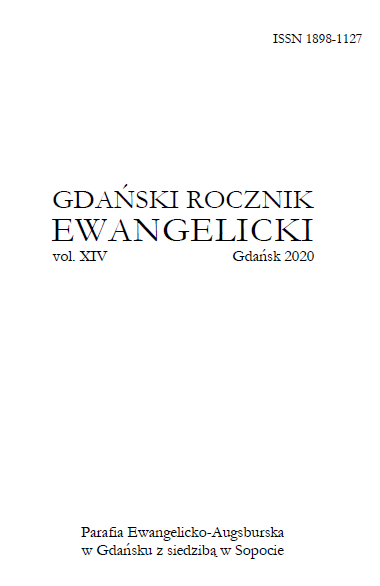
The article attempts to present the history of Luther’s Evangelical Parish, existing in the years 1896-1945. It was the oldest in Wrzeszcz (Langfuhr), a rapidly developing suburb of Gdansk (Danzig) in the Wilhelminian Era. In the interwar period it was also one of the two largest evangelical parishes in the entire Free City of Danzig. New parishes were separated from its territory twice. Luther’s parish played a key role in the pastoral ministry of military units stationed in Wrzeszcz (Langfuhr) until 1920, further, among others, in creating a new central municipal cemetery in Danzig and in the history of the local anti-Nazi Confessing Church (Bekennende Kirche) movement.
More...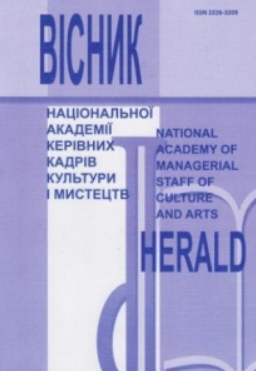
The purpose of the article is to determine and explore the relationship and interaction of historical events (Russian Revolution of 1917 and its consequences; World War II (1939-1945); anti-Roma policy of Nazism and the Holocaust; the collapse of the USSR) on the formation of Roma culture in the context of socio-cultural space of Ukraine XXI century. The methodology is based on the use of historical, socio-cultural methods to reveal the historical truth in the formation of Roma culture in different chronological periods. The scientific novelty is that for the first time in chronological order the relationship and interaction of historical events of the ХХ century (the Russian Revolution of 1917 and its consequences; World War II (1939-1945); anti-Roma policy of Nazism and the Holocaust; the collapse of the USSR) and the formation of Roma culture in the context of the socio-cultural space of Ukraine in the XXI century, determines the origin, formation, current state, and influence of Roma art on the development of Ukrainian culture of the XXI century. Conclusions. Historical events, from ancient times to the present, including the Russian Revolution of 1917 and its consequences, World War II (1939-1945), anti-Roma policies of Nazism, the Holocaust, the collapse of the USSR, had a relationship and decisive influence on the formation of Roma culture in the context of the socio-cultural space of Ukraine of the XXI century. The first Holodomor became a motive for strengthening the Ukrainian national consciousness, the settlement of Roma on the territory of Ukraine, and uniting the joint efforts of Ukrainians to resist the Soviet government. During the Second World War, the Roma did not lose their optimism and thirst for creativity, raised the fighting spirit with military songs, dances, and amateur front-line concerts. It was emphasized that a significant number of Roma were killed in the punitive actions of the Nazi occupation regime in Ukraine. In the middle of the twentieth century, no book in the Romani language (neither artistic nor scientific) was published in the USSR, and Romani schools were closed. The development of Roma culture was formal. After the collapse of the USSR, Roma artists were able to tour freely around the world and integrate their culture without any fear of oppression of their creative activities, continuing their development in the socio-cultural space of Ukraine in the XXI century.
More...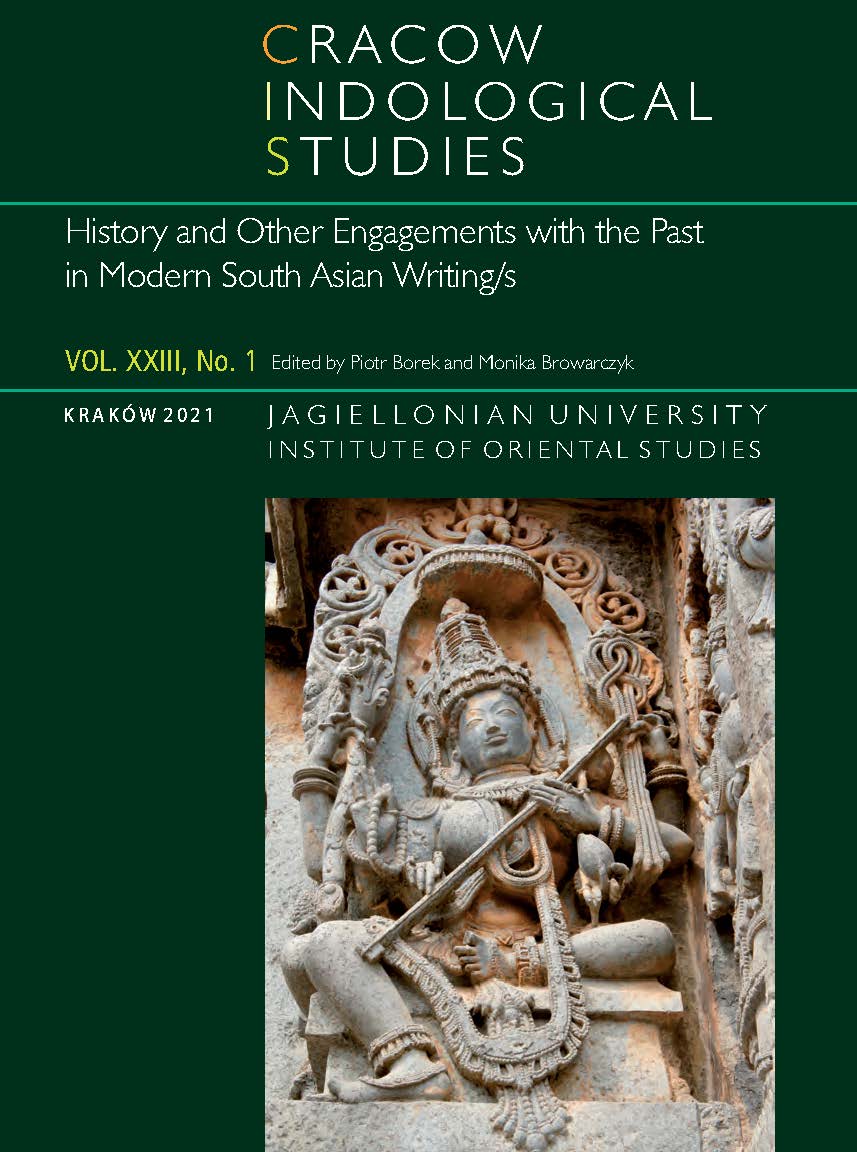
The present paper looks at a fictional account of the Bengal famine of 1943 in order to locate relevant historical information regarding a specific period of time (Chatterjee 2014) and identify elements that would allow it to be read as an example of the ‘prose of the world’ in Ranajit Guha’s understanding of the term (Guha 2002). The narrative of Amr̥tlāl Nāgar’s Bhūkh is framed through author’s recourse to his own experience, artistic and historical research, lived emotions and personal feeling of urgency to record the event. By repeatedly raising the claim of authenticity of his testimonial, Nāgar unwittingly draws us into an investigation of his relationship with the main narrator and the protagonist of his work. This, in turn, reveals the absence of clarity on the part of the author—he seems in two minds when discussing the role of the elites in making of the famine and is unable to either criticise or justify their failure to act. Further, the paper investigates social reality presented in the novel; the naturalistic, progressive aesthetics used in the description of the embodied violence of hunger; and the portrayal of the protagonist whose vantage point makes the story significantly detached from the ‘masses’ depicted variously as insects or savages, driven by hunger and hunger only. Principal focaliser’s upper-caste perspective allows him to feel superior to the less fortunate ‘skeletons’ and ultimately justify his survival by saving a seemingly upper cast infant, the action understood by him as equal to saving the entire human race. However, to my mind, the reality of hunger presented by the protagonist is conventional, self-centred, and lacks in-depth social criticism.
More...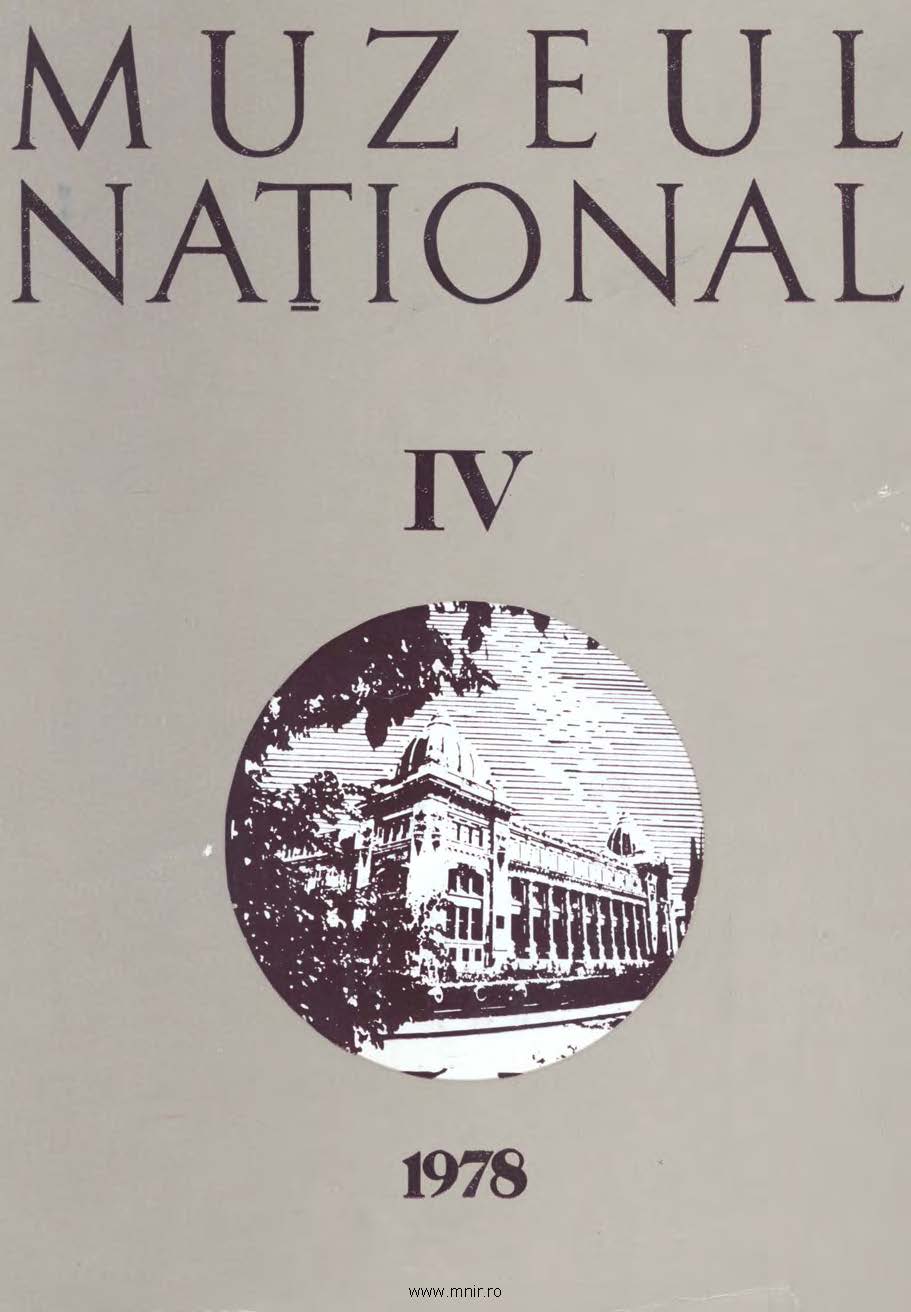
Dans la présente communication, l'auteur se propose de mettre en relief la contribution que la publication „Graiul liber", le journal des prisonters roumains dans l'U.R.S.S. — a apporté à l'action pour le réveil des consciences des prisonniers roumains de l'Union Soviétique en vue de la lutte contre l'Allemagne hitlérienne, pour la libération du pays, pour la liberté et la démocratie. Le journal „Graiul liber" a constitué un vrai liant entre le pays et les prisonniers qui se trouvaient dans l'U.R.S.S., puisqu'a ceux-ci pouvaient connaître les réalités roumaines, la lutte de tout le peuple roumain contre les occupants allemands, contre la dictature d'Antonesco pour la liberté et la démocratie. Après avoir été constituée la division de volontaires roumains „Tudor Vladimirescu", le journal „Graiul liber" a consigné les victoires obtenues par cette héroïque division dans la lutte contre l'Allemagne hitlérienne. Dans les pages du journal se trouvent des amples références concernant l'héroïque acte de l'insurrection nationale armée anti-fasciste et anti-impérialiste du 23 Août 1944. Jusqu'au moment quand il a cessé d'apparaître, le journal a informé les lecteurs sur l'ample processus révolutionnaire qui a eu lieu dans notre pays après la victoire de l'insurrection.
More...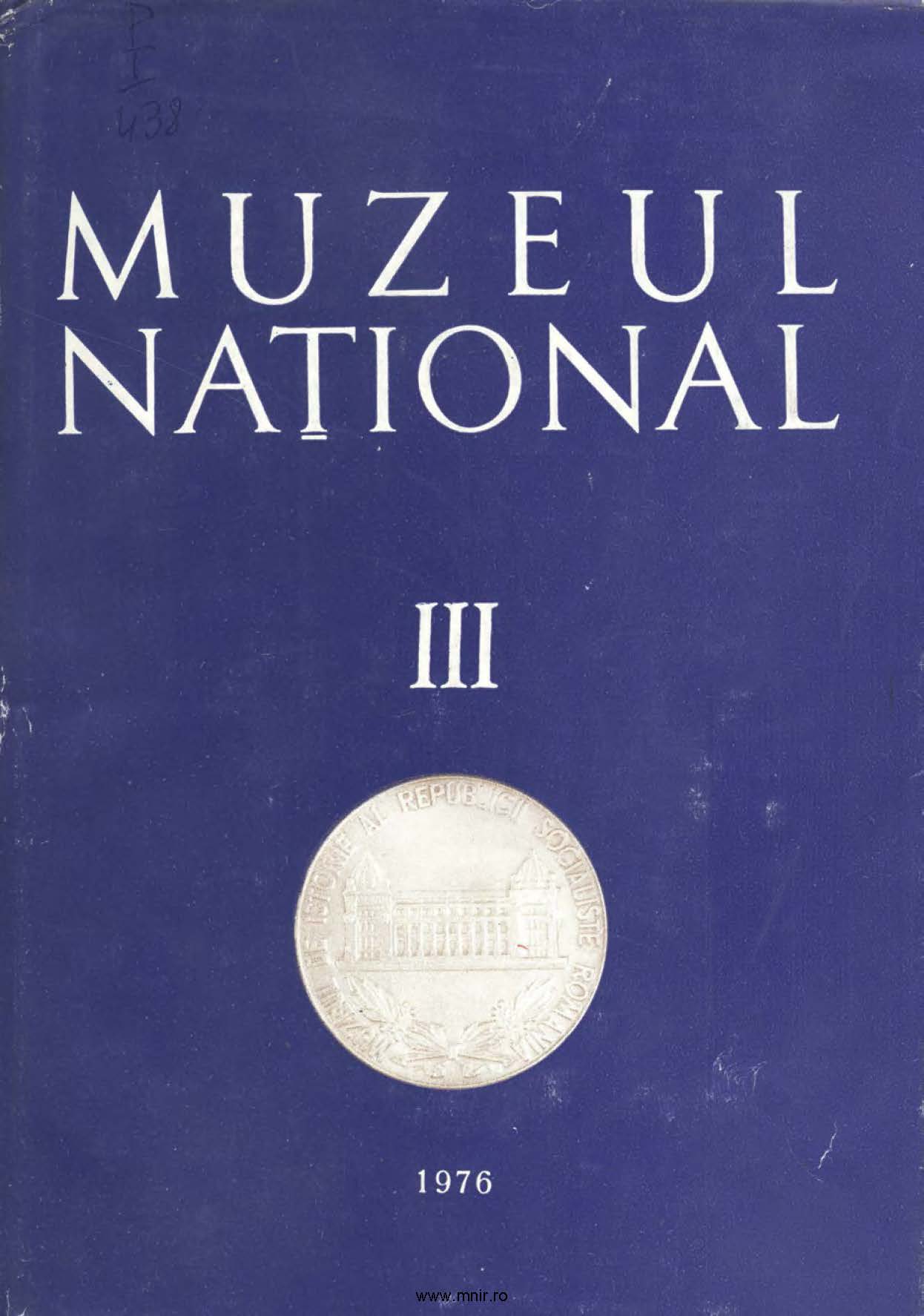
L'exposition, qui fait l'objet de la présente communication, a été inaugurée et organisée la 10 août 1974, par le Musée d'Histoire de la R. S. de Roumanie, dans le cadre de l'ample programme des manifestations consacrées à la célébration de l'un des plus remarquables événements de l'histoire roumaine — l'insurrection nationale armée anti-fasciste et anti-impérialiste. En lignes générales, cette exposition jubiliaire de haute tenue scientifique a présenté: la lutte anti-fasciste et anti-impérialiste du peuple roumain; la préparation et le déroulement de l'insurrection nationale d'août 1944; la contribution de la Roumanie à la guerre anti-hitlérienne; les transformations révolutionnaires accomplies sous la direction du parti communiste, dans la vie socio-politique et économique du pays; l'édification de la société socialiste multilatéralement développée — étape que nous vivons à présent. L'objectif que s'est propose d'illustrer cette exposition, y parvenant d'ailleurs d'une manière excellante, fut notamment celui de mettre en évidence le rôle du P.C.R. comme force politique-dirigeante et par là, les maints aspects que ce rôle même subsume: la nécessité objective de la direction de la révolution et de l'édification socialiste par le parti communiste; la politique marxiste-léniniste du P.C.R. d'édif ication du socialisme en Roumanie; son caractère créateur, réaliste-scientifique; la voie, les formes et méthodes originales pour accomplir les taches de l'édification de la nouvelle société; la contribution théorique et pratique de notre parti à l'enrichissement de la théorie révolutionanire. Ainsi, les plus importants événements politiques y ont été largement illustrés, ainsi que: les succès obtenus les dernières trente ans dans le processus du développement économico-social et culturel du pays, la préoccupation permanente du parti pour renforcer la démocratie socialiste — par le perfectionnement de la direction d'État et l'accroissement du rôle des organisations de masse et civiques et du Front de l'Unité Socialiste — pour faire accroître le niveau de bien-être et de civilisation du peuple entier, pour promouvoir constamment une politique de paix et de collaboration. L'exposition jubiliaire a entraîné une vaste activité d'investigation et d'évaluation de chaque pièce exposée, ainsi que la recherche des meilleurs solutions et modalités techniques à prendre dans ce but. En ce sens, les documents et les photos ont été, évidemment, prioritaires. Mais, le matériel auxiliaire complémentaire, lui aussi fut largement utilisé. L'impression d'ensemble laissée aux visiteurs par cette exposition fut justement celle de l'image d'aujoud'hui de la Roumanie socialiste, image qui a nettement prouvé que le peuple roumain a édifié, sous la direction du P.C.R., pendant trois décennies seulement, un nouvel pays, florissant, que ce peuple est devenu entièrement maître de son destin et avenir.
More...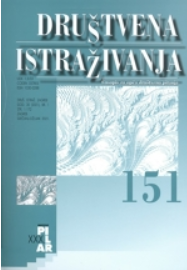
The Roma population has been living in Croatian territories for more than six centuries and during that period was mostly persecuted by state and local authorities who sought to assimilate them. Such antigypsyism political practice was not unique only for the Croatian territory but was practiced in most other European countries. After World War II there was no commemoration and recognition of Roma victims in most European countries, including socialist Croatia (Yugoslavia). Such marginalization of the culture of remembrance of Roma war victims was reflected in the lack of education on this subject in the Croatian education system, where it is mostly mentioned in only a few words. The paper focuses on the analysis of how the issue of Roma suffering in the Independent State of Croatia (NDH) and Europe is (un)integrated into the Croatian education system.
More...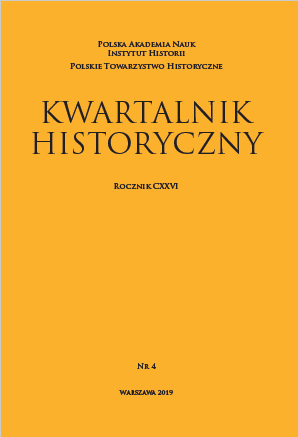
Review of: Dariusz Jarosz - Bruno Kamiński, Fear Management. Foreign Threats in the Post-War Polish Propaganda. The Influence and the Reception of the Communist Media (1944–1956), Berlin 2019, Peter Lang, ss. 385, Studies in History, Memory and Politics
More...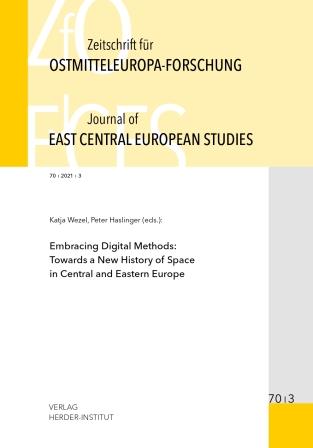
World War II led to extensive rationing, both of agricultural production and individual consumption, which significantly shaped the everyday life of the Czech population in the Protectorate of Bohemia and Moravia from 1939 to 1945. This paper shows how new digital methods can be used to contribute to this history of National Socialism, in particular, in the areas of rule, administration, and everyday life in the Protectorate of Bohemia and Moravia. Different types of sources from the local administration of the Protectorate of Bohemia and Moravia are presented and analyzed using a specially developed software. This provides a structured insight into the everyday life of the local population. The software makes it possible to systematically and statistically evaluate previously unstructured source material. It can be shown that district offices staffed by Czech officials and institutions previously unknown to research, such as the Supreme Price Authority and the Bohemian-Moravian Market Association, were central to the enforcement of the wartime economy in the protectorate. The everyday contact of the local population with the administration was mostly within the framework of a “normative state” rather than a “prerogative state.” In contrast to traditional accounts, this analysis shows that the security organs, such as the Czech or German police and gendarmerie, or Gestapo were only involved to a minor and rather incidental extent. Furthermore, the paper shows that the local population possessed a wide range of agency, which it was able to use.
More...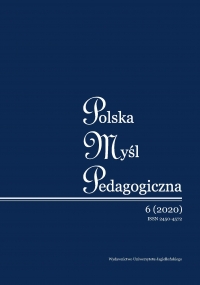
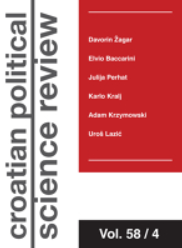
In contemporary Bosniak historiography on the Independent State of Croatia (NDH), Muslim resolutions have an important place – six political petitions sent by members of the Muslim religious and secular elite to the NDH authorities and to the public in autumn and winter of 1941. In the first part of the article, I describe the historical-political context in which the resolutions appeared. After that I point out the motives that prompted interest in those documents which were found in their alleged concealment and forgery in Yugoslav politics and historiography during the communist period. In the second part, I present interpretations of the content and meaning of the resolutions in the revisionist current of Bosniak historiography. In the third part, by using discursive analysis of resolutions, and by describing the war ideological and political profile of many of their prominent signatories, I show the real nature of these documents. In the concluding part, I analyze the dynamics and logic of the revisionist interpretation of Muslim resolutions – spatial and social dissemination and ideological and political falsification – as one of the foundations of the construction of anti-fascist history of Muslims/Bosniaks in World War II in general. I conclude that the Muslim resolutions were neither anti-Ustasha nor anti-fascist acts, but protest letters that had limited political goals: to influence the state to curb and control religious and ethnic violence and to protect the Muslim population from violence against it, but also to absolve it of responsibility for violence against other communities.
More...![MORAVČÍKOVÁ, Henrieta et al. Bratislava (ne)plánované mesto [Bratislava, (Un)planned City]. Bratislava: Slovart, 2020, 624 pp. ISBN 978-80-556-4696-1](/api/image/getissuecoverimage?id=picture_2021_64353.jpg)
Review: MORAVČÍKOVÁ, Henrieta et al. Bratislava (ne)plánované mesto [Bratislava, (Un)planned City]. Bratislava: Slovart, 2020, 624 pp. ISBN 978-80-556-4696-1
More...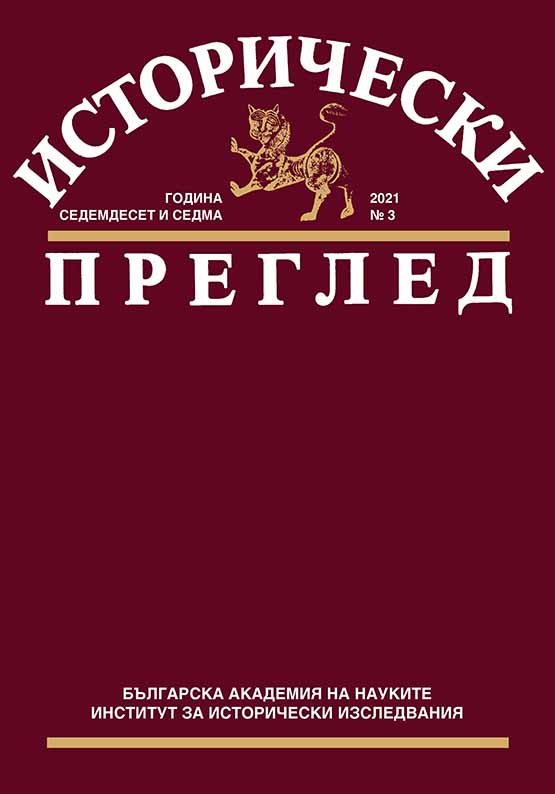
The article traces the development of anti-Jewish policy in Nazi Germany from the appointment of Hitler as Chancellor to the Wannsee Conference, which adopted a specific plan for the extermination of the Jewish population in Europe. Following the escalation of the process of discrimination and disenfranchisement of Jews, the article presents the most discussed issues in the study of the Holocaust. It is clarified under what conditions, by whom the decision was made for the mass murder of European Jews and the main figures who organize its practical implementation are outlined. An excerpt from the minutes adopted at the Wannsee Conference is attached to the author’s text.
More...